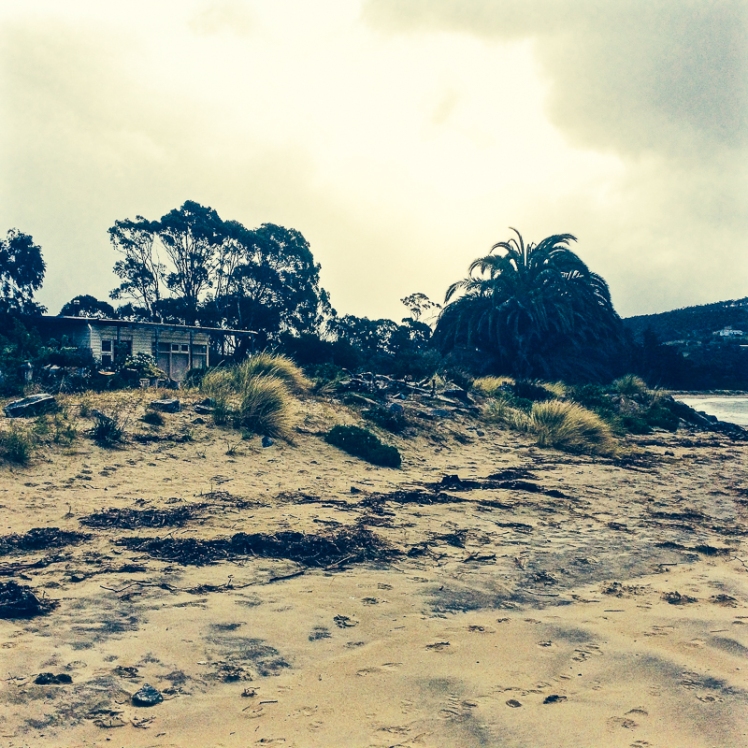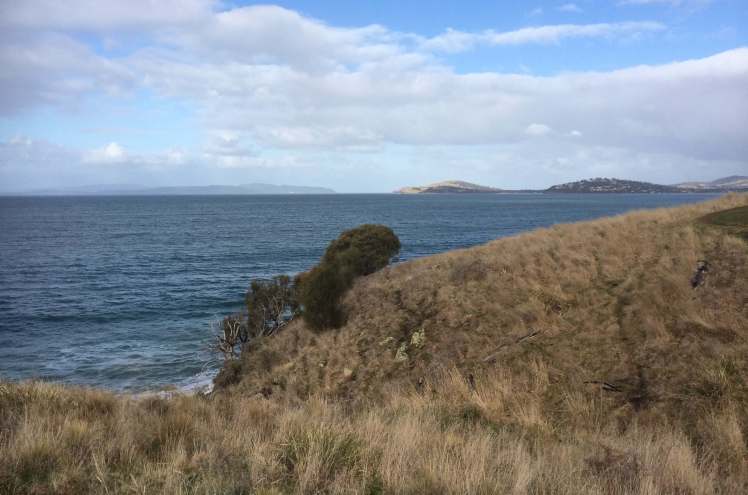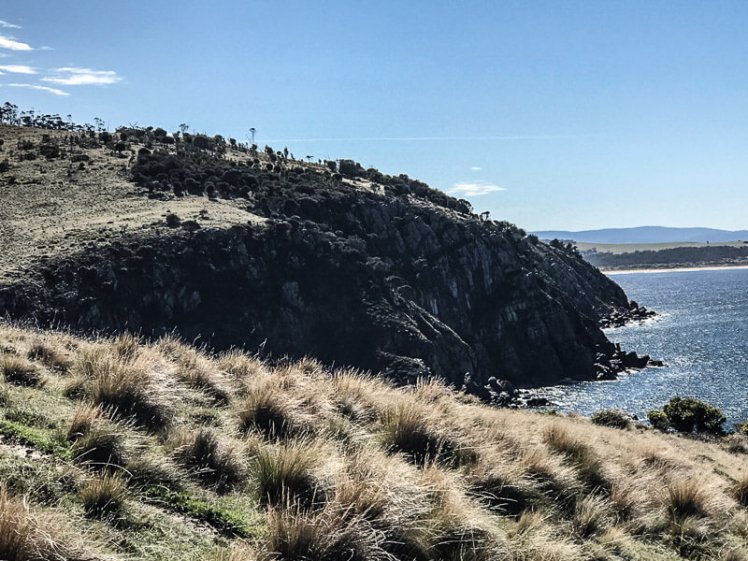Frederick Henry Bay: Seven Mile and Five Mile Beaches
Most of the sand on the world’s beaches consists of two minerals, feldspar and quartz. They are particularly stable and that makes them especially durable. Take a peek at sand through a microscope and you’ll see that the grains look like tiny pebbles bigger than silt, smaller than gravel, many hued, transparent quartz, weathered smooth, pulverised and polished over the millenia. They form the unique, mobile fingerprint of the beach, created by the swish and swash of waves, tides and seafloor shape, gradient and cover. They may wash more or less straight up on to the beach or away from it, or be carried there by longshore drift, arriving at an angle, a part of the shifting sediment carried along by the coast-shaping sea.
***
Seven Mile Beach (T397)

Seven Mile Beach, mostly southeast facing, is 15 km from Hobart and is pretty much the closest surf beach to the city. The waves aren’t usually much more than a metre here, but they’ve travelled across about 20 km of Frederick Henry Bay to break on this seven mile long beach backed by homes at the western end and a beach reserve further east. There’s a road behind the dunes and the reserve. It’s dirt up the eastern end, bitumen down west.
One of the most obvious features of this beach is the unhappy pine plantation that extends behind it and encroaches on the dunes but if you’re standing on the beach it’s the great sweep of sand and the views across Frederick Henry Bay that are the most compelling.
What’s not so obvious when you’re on the beach itself is that it is a massive ‘sand spit that traverses the axis of the eroded Coal River Valley rift’ (Leaman, 1999), where once back in time there were twenty active volcanoes. In this valley early settlers found skinny seams of coal, enough to inspire hope that quickly collapsed into disappointment.
We’ve come to this beach when the tide has been so high it’s been right up to the marram infested, undercut dunes and there’s been insufficent beach for a walk. We’ve come on extreme lows when the beach’s width and a sunny sky has made it particularly inviting and horses, dogs, swimmers and beach umbrellas have given it a festive air. You don’t want for space here. This beach allows everyone to disperse along its generous length. Some people seem to make use of the dunes to disperse with clothing altogether, but in Tasmania the sun has a sharp edge and can end up being a painful experience for delicate extremeties.
This is a go to beach for cycling at low tide when the sand is hard and you can fly along its length all the way out to Sandy Point where Pitt Water, a 3,500 ha barrier estuary spills into the bay and Seven Mile Beach and Five Mile Beach meet. This beach system they’re both a part of has actually built out 1 to 2 km seaward, according to Short (2006), ‘as a series of more than 50 low foredune ridges which have subsequently been transgressed by dune activity that increases to the east.’ It’s on this barrier land feature that the pines were planted and Hobart’s airport built, so a particular Seven Mile Beach experience is planes landing and taking off low overhead. Pitt Water-Orielton Lagoon is one of Tasmania’s ten Ramsar wetlands and provides refuge for threatened species, both avian and botanical.

From Sandy Point you can see Lewisham on Pitt Water’s eastern shore, a skinny community of houses that traces the shoreline of this estuarine lagoon with the community of Dodges Ferry at the mouth. Looking west to the far end of Seven Mile Beach where the walk around Single Hill ended is actually the best known part of the beach. The hill, the houses and Acton Creek give it an intimacy the rest of the beach lacks. The thin western finger of the small township broadens out eastwards and the houses start extending inland across that ancient but shallow barrier dune system.

Five Mile Beach
This is no beach for a bike. As a Ramsar site it’s the domain of shorebirds. I came here with the geo on a spring low tide that hadn’t receded as much as we’d have liked. There’s a track behind the beach that meanders through pine forest, then turns to follow the Pitt Water coast. True forests uplift and Tasmania has magnificent ones that provide this kind of experience, but plantations cast a desolate atmosphere both sad and disturbing.
In his book The hidden lives of trees: what they feel, how they communicate – discoveries from a secret world, forester Peter Wohlleben discusses the various ways trees suffer in plantations. Communicating via electrical impulses and chemical messages with various fungi as support networks the lives of trees is worth getting to know about. A monoculture isn’t healthy and doesn’t make for happy, healthy trees.

We didn’t complete this walk. I hadn’t read this book yet, but the atmosphere was so unedifying that it stilled conversation and dampened our mood. At a certain point we stopped and reluctantly agreed that we found the damaged dunes and miserable trees (upended in places, and ravaged by the sirex wasp) too disheartening, particularly when we imagined what the dune system was like before human interference.
We found a way on to the beach via a pathway through the eroded dunes and because the tide had receded further out by then we could walk along the shallows enjoying the occasional presence of a few shorebirds. Crabs beginning to emerge from their burrows and apart from the sad sight of trees that had fallen with the collapsing dunes the view of Pitt Water was a whole lot better.
A combined Seven Mile and Five Mile Walk: CCC brochure
Tip: If you’re planning on walking Five Mile Beach, wait for a spring low tide.












